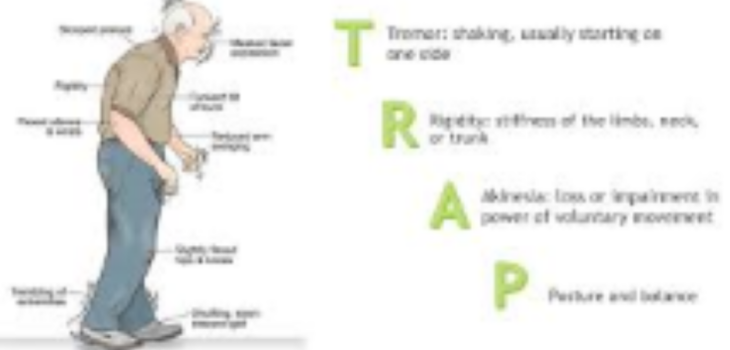 Health & Fitness
Health & Fitness
Rigidity vs. Spasticity: Key Differences and Management Strategies
- by annalee3120
Both rigidity and spasticity involve abnormal muscle tone, yet they differ significantly in their causes, presentation, and management. Understanding these differences is crucial for proper treatment and improved patient outcomes. This article explores the key distinctions between rigidity and spasticity, common causes, and effective management strategies with a focus on pharmacological treatments.
Understanding Rigidity
Rigidity refers to a uniform increase in muscle tone, where muscles feel stiff and resist passive movement in all directions. It is often associated with neurological disorders, particularly Parkinson’s disease.
Causes of Rigidity
- Parkinson’s disease: Rigidity is one of its hallmark symptoms, caused by dopamine deficiency in the basal ganglia.
- Neuroleptic-induced parkinsonism: Long-term use of antipsychotics can lead to rigidity.
- Stroke or brain injury: Damage to motor pathways may result in increased muscle tone.
Symptoms of Rigidity
- Constant stiffness in the limbs, neck, or torso.
- Resistance to movement, regardless of speed.
- “Lead-pipe” rigidity: uniform resistance throughout the movement.
- “Cogwheel” rigidity: intermittent resistance felt like a series of catches.
Understanding Spasticity
Spasticity, on the other hand, is a condition characterized by velocity-dependent increases in muscle tone. It typically results from damage to the upper motor neurons in conditions like multiple sclerosis (MS), cerebral palsy (CP), and spinal cord injuries.
Causes of Spasticity
- Multiple sclerosis: Damage to the myelin sheath leads to impaired nerve signaling.
- Cerebral palsy: Brain damage during early development causes spasticity in affected limbs.
- Stroke: Post-stroke spasticity can develop in weeks or months after the event.
- Traumatic brain or spinal cord injuries: These injuries disrupt normal motor control pathways.
Symptoms of Spasticity
- Muscle tightness that worsens with rapid movement.
- Clonus: Repetitive muscle contractions when stretched.
- Hyperreflexia: Exaggerated reflex responses.
- Pain and difficulty with voluntary movements.
Key Differences Between Rigidity and Spasticity
| Feature | Rigidity | Spasticity |
|---|---|---|
| Cause | Basal ganglia dysfunction (e.g., Parkinson’s) | Upper motor neuron lesion (e.g., MS, CP) |
| Muscle Resistance | Uniform (not velocity-dependent) | Velocity-dependent (increases with speed) |
| Movement Pattern | Present in all directions | Often unilateral or specific to certain muscles |
| Associated Features | “Cogwheel” or “lead-pipe” sensation | Clonus, hyperreflexia |
| Common Conditions | Parkinson’s disease, drug-induced parkinsonism | Stroke, cerebral palsy, MS |
Management Strategies for Rigidity
Effective management of rigidity involves treating the underlying condition, using medications, and incorporating supportive therapies.
Pharmacological Treatments for Rigidity
- Levodopa and Carbidopa
- Mechanism: Boost dopamine levels in the brain.
- Example: Sinemet (Levodopa/Carbidopa).
- Dosage: Typically starts at 100/25 mg three times daily, adjusted as needed.
- Dopamine Agonists
- Mechanism: mimic dopamine’s effects.
- Example: Pramipexole, Ropinirole.
- Benefits: Reduce rigidity and improve motor function.
- Anticholinergics
- Mechanism: Balance neurotransmitters in the brain.
- Example: trihexyphenidyl, benztropine.
- Use: Particularly effective for younger patients with tremor-dominant Parkinson’s.
- MAO-B Inhibitors
- Mechanism: Inhibit dopamine breakdown.
- Example: Selegiline, Rasagiline.
- Benefit: Provides a mild reduction in rigidity.
Management Strategies for Spasticity
Spasticity management involves reducing excessive muscle tone, improving functional ability, and relieving associated pain.
Pharmacological Treatments for Spasticity
- Baclofen
- Mechanism: Acts on GABA receptors to reduce muscle tone.
- Dosage: Typically starts at 5 mg three times daily, gradually increased to 20-80 mg/day.
- Caution: Abrupt withdrawal may lead to severe rebound spasticity or seizures.
- Tizanidine
- Mechanism: centrally acting muscle relaxant.
- Example: Zanaflex.
- Dosage: Starts at 2-4 mg every 6-8 hours, up to 36 mg/day.
- Benefits: Reduces spasticity with fewer sedative effects compared to Baclofen.
- Diazepam (Valium)
- Mechanism: Enhances GABA activity.
- Use: Effective for acute spasticity.
- Dosage: 2-10 mg, 2-4 times daily.
- Dantrolene Sodium
- Mechanism: Reduces calcium release from muscle sarcoplasmic reticulum.
- Use: Helpful for severe spasticity, including malignant hyperthermia.
- Dosage: Typically 25 mg daily, increased as needed.
- Botulinum Toxin (Botox)
- Mechanism: Blocks acetylcholine release at neuromuscular junctions.
- Use: Effective for focal spasticity (e.g., spasticity in a single limb).
- Administration: Injected into overactive muscles every 3-4 months.
Non-Pharmacological Management
In both rigidity and spasticity, non-drug interventions play a vital role in enhancing treatment outcomes.
Physical Therapy (PT)
- Stretching exercises: improve flexibility and reduce stiffness.
- Strengthening exercises: Enhance muscle control and support weak muscles.
- Functional training: focuses on daily activities like walking, dressing, and eating.
Occupational Therapy (OT)
- Helps patients adapt to their environment and use assistive devices.
- Teaches energy conservation techniques.
Speech Therapy
- For patients with rigidity or spasticity affecting facial muscles and speech clarity.
Orthotic Devices
- Braces, splints, or custom orthoses can help maintain joint alignment and reduce muscle contractures.
Hydrotherapy
- Warm water exercises relax muscles and reduce spasticity.
Emerging Treatments and Research
Deep Brain Stimulation (DBS)
- Indication: Advanced Parkinson’s with severe rigidity.
- Mechanism: Electrodes implanted in the brain modulate abnormal signals.
- Benefit: Provides significant improvement in rigidity and other motor symptoms.
Intrathecal Baclofen (ITB) Therapy
- Indication: severe, refractory spasticity.
- Mechanism: Delivers Baclofen directly into the spinal fluid via a pump.
- Benefit: Effective for lower limb spasticity with fewer systemic side effects.
Cannabinoids
- Emerging evidence suggests potential benefits in reducing spasticity, particularly in MS.
- Example: Nabiximols (Sativex).
Lifestyle Modifications
Patients with rigidity or spasticity can benefit from lifestyle changes to improve their overall quality of life.
Diet and Nutrition
- Hydration: Adequate fluid intake reduces muscle cramps.
- Balanced diet: supports overall health and muscle function.
Regular Exercise
- Low-impact activities like yoga, tai chi, or swimming promote flexibility and muscle relaxation.
Stress Management
- Stress can exacerbate muscle tightness. Mindfulness techniques, meditation, and counseling can help.
Conclusion
Though rigidity and spasticity share some similarities, their distinct mechanisms and clinical presentations require tailored management approaches. A combination of pharmacological treatments and supportive therapies ensures optimal patient care. Early diagnosis and intervention play a crucial role in improving quality of life for patients dealing with these challenging conditions.









